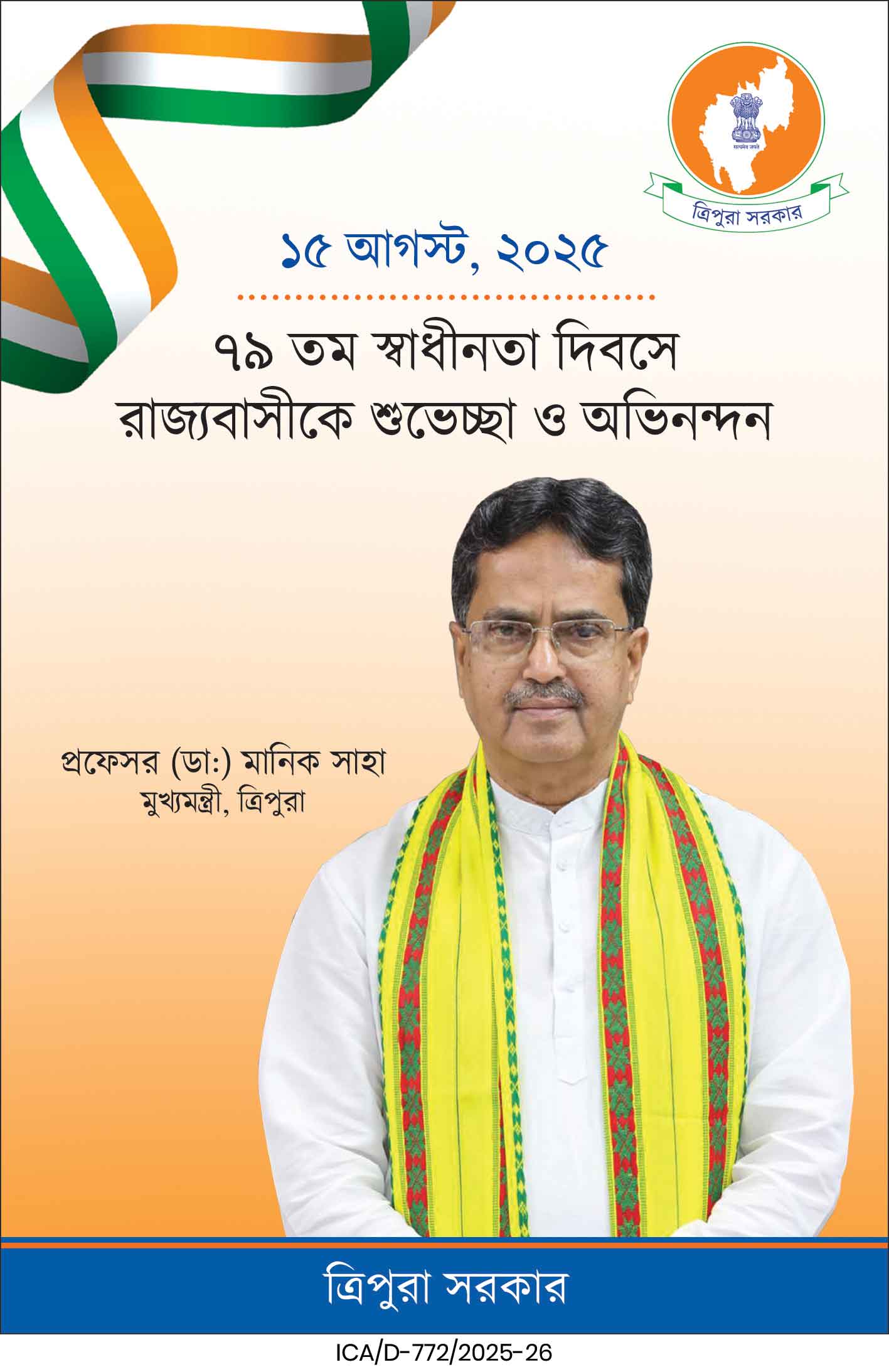Tripura Power Minister Ratan Lal Nath announced that the state now supplies electricity for 23 hours and 49 minutes daily, ranking fourth in India. He highlighted major upgrades, including the upcoming 120 MW Rukhiya combined cycle gas turbine project.
Tripura Power Minister Ratan Lal Nath on Tuesday announced a significant milestone in the state’s power sector, stating that Tripura now supplies electricity for an average of 23 hours and 49 minutes every day. This achievement places Tripura in the fourth position nationally in terms of power supply duration, according to the National Feeder Monitoring System (NFMS) of the Government of India.
Addressing the media, the Minister highlighted that power availability in rural and urban regions has improved remarkably. Villages in Tripura now receive an average of 23 hours and 43 minutes of uninterrupted electricity daily, while cities and urban centres enjoy 23 hours and 59 minutes, nearly a full 24-hour supply. Nath stated that this level of performance reflects the state government’s sustained focus on strengthening the power distribution infrastructure and improving efficiency over the last seven and a half years.
He noted that before the Bharatiya Janata Party (BJP) took office in 2018, Tripura received barely 21 hours of daily power supply, which posed challenges for households, industries, and essential services. “Today, Tripura stands among the top-performing states in power supply, and this progress is entirely based on the NFMS report,” he added.

The Minister made these remarks after participating in the bhumi pujan ceremony of the Rukhiya 120 MW Combined Cycle Gas Turbine Project, a transformative initiative aimed at boosting the state’s power generation capacity. The ceremony marked the beginning of the ambitious upgrade of the existing gas-based thermal power plant located in Rukhia, Sepahijala district, approximately 60 kilometres from Agartala.
Nath explained that the Rukhia plant had been developed across six phases between 1990 and 2006. It originally housed nine Open Cycle (OC) Gas Turbine Generator Sets, but all nine units have now been declared obsolete. Their operational lifespans expired between 2002 and 2013, resulting in their gradual shutdown. Only three units remain functional, each with a capacity of 21 MW, bringing the plant’s total active capacity to 63 MW. However, due to limited natural gas availability, the plant currently generates only 19 MW, far below its potential.
To address this issue and dramatically enhance output, the government has initiated a major upgrade with financial support from the Asian Development Bank (ADB). The project will convert the existing 63 MW open-cycle setup into a 120 MW combined cycle gas turbine system, which utilizes waste heat to generate additional electricity through a steam turbine.
Nath elaborated on the efficiency improvements, stating that open-cycle systems typically operate at 35 to 45 percent efficiency, since much of the hot exhaust gas is wasted. In contrast, combined cycle systems can reach up to 60 percent efficiency, as the waste heat is reused to produce more power. “This means we will be able to generate 120 MW from the same supply of natural gas, significantly improving output without additional gas consumption,” he explained.
The project, estimated to cost Rs 1,320 crore, is expected to be completed within the next three years. Once operational, the upgraded Rukhia plant will substantially reduce Tripura’s dependence on external power sources and help stabilise supply during peak demand periods.
The Minister also highlighted several ongoing efforts to reduce technical and non-technical losses in the power network. One major initiative is the installation of 13,435 kilometres of Aerial Bunched (AB) Cable, replacing vulnerable overhead lines in rural areas. Earlier, the state had only 198 kilometres of such cabling. The new cables help curb power theft and enhance supply reliability.
A major future project is also being explored with the support of NHPC, which is assessing the feasibility of an 800 MW pumped storage project at Chawmanu in Dhalai district. If approved, it would become the first pumped storage facility in Northeast India, enabling the state to store excess electricity and release it during high-demand periods.
Nath added that consumer participation has also improved, with 46.49 percent of consumers now paying their monthly electricity bills, up from 42.28 percent, contributing to better financial health of the power sector.
| Also Read: TSECL Issues Strong Warning Against Rising Fake Job Recruitment Scams |
He concluded that Tripura’s power sector is undergoing a transformative phase, driven by technological upgrades, improved efficiency, and a commitment to ensuring reliable electricity for every household and enterprise.





